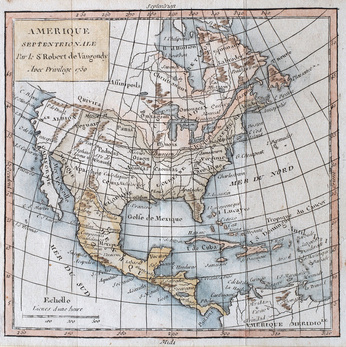Learn geography online with the case study of North American trade as an example of human geography.
When the Europeans first discovered and settled North America they settled it on a mercantile basis. This is so because largely at the time of the colonization (16 and 17 hundreds) most of the worlds manufacturing was done in Europe. Europeans took interest in the New World because of it’s wholesale opportunities. These included manufactured goods from Europe as well as natural resources from the North American continent of which the fur trade is the greatest example. Wholesale or mercantile economies tend to use the least effort principal. This is the cheapest route which usually involves water as the medium of travel or the shortest possible distance. This result in the city alignments on a north-south basis, largely because North American topography (mountains, plains coastlines, lakes) runs on a north- southerly direction as well. Also the proximity to the American border. This would normally lead to economic bonding of the two countries threatening Canada’s very existence. However a total free market economy is not the whole picture.
There is the political aspect of trade which was formally bound up in the colonial grab for North American territory by European powers. After Britain had lost the Thirteen Colonies to the new settlers it continued to hang on to it’s colonies to the north, making them strong by an east-west trade agreement, largely because of fear of economic and cultural absorption by the United States. Canada does however have north-south trade relations. After all, the U.S. is our greatest trading partner. How Canada balances the trading of east-west and North-south is political and economic, respectively. They are often in conflict but they form the Canadian political economy, from the fur trade to the effect on free trade. This is an example of the dynamics of human geography. Human geography spacially analyzes the human population in a given space along with it’s landscapes (both natural and human made) and cultural activities including trade.
